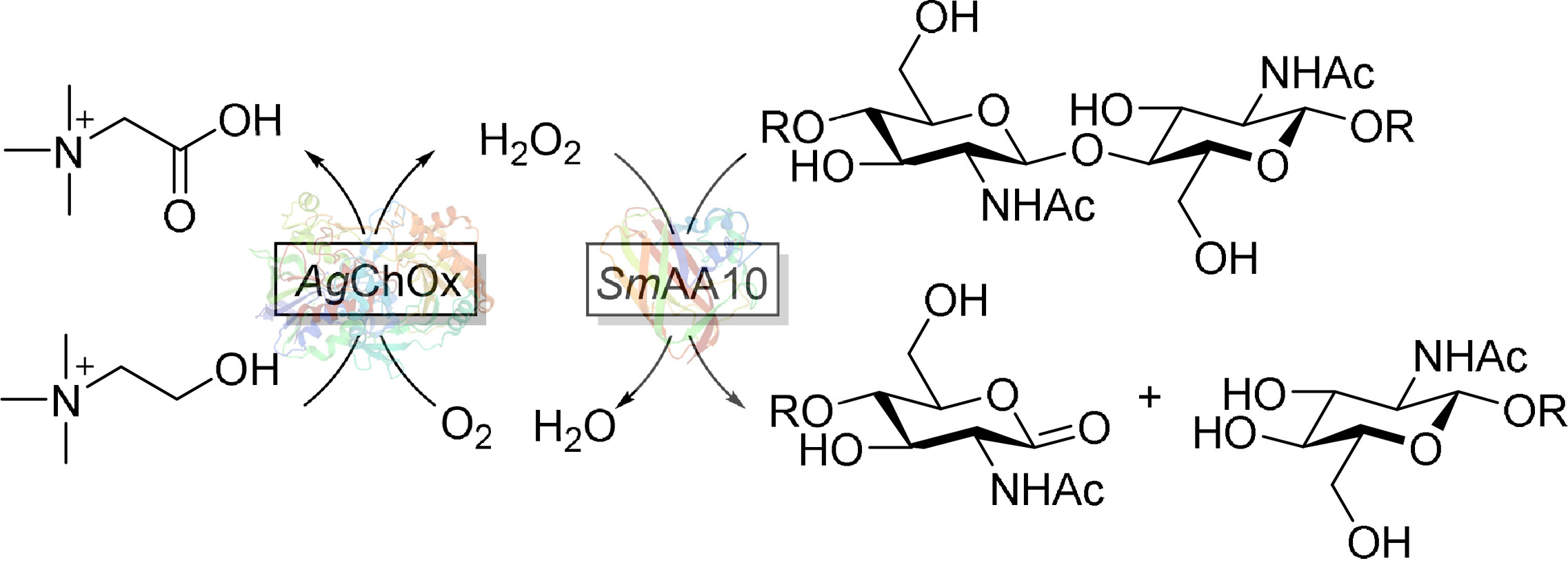ChemBioChem – Nam-Hai Hoang, Ole Golten, Zarah Forsberg, Prof. Vincent G. H. Eijsink, and Michael Richter

Chitin, the most abundant amino polysaccharide in Nature, has many applications in different fields. However, processing of this recalcitrant biopolymer in an environmentally friendly manner remains a major challenge. In this context, lytic polysaccharide monooxygenases (LPMOs) are of interest, as they can act on the most recalcitrant parts of chitin and related insoluble biopolymers such as cellulose. Efficient LPMO catalysis can be achieved by feeding reactions with H2O2, but careful control of H2O2 is required to avoid autocatalytic enzyme inactivation. Herein, we present a coupled enzyme system in which a choline oxidase from Arthrobacter globiformis is employed for controlled in situ generation of H2O2 that fuels LPMO-catalyzed oxidative degradation of chitin. We show that the rate, stability and extent of the LPMO reaction can be manipulated by varying the amount of choline oxidase and/or its substrate, choline chloride, and that efficient peroxygenase reactions may be achieved using sub-μM concentrations of the H2O2-generating enzyme. This coupled system requires only sub-stoichiometric amounts of the reductant that is needed to keep the LPMO in its active, reduced state. It is conceivable that this enzyme system may be used for bioprocessing of chitin in choline-based natural deep eutectic solvents.
Click here for the complete article!